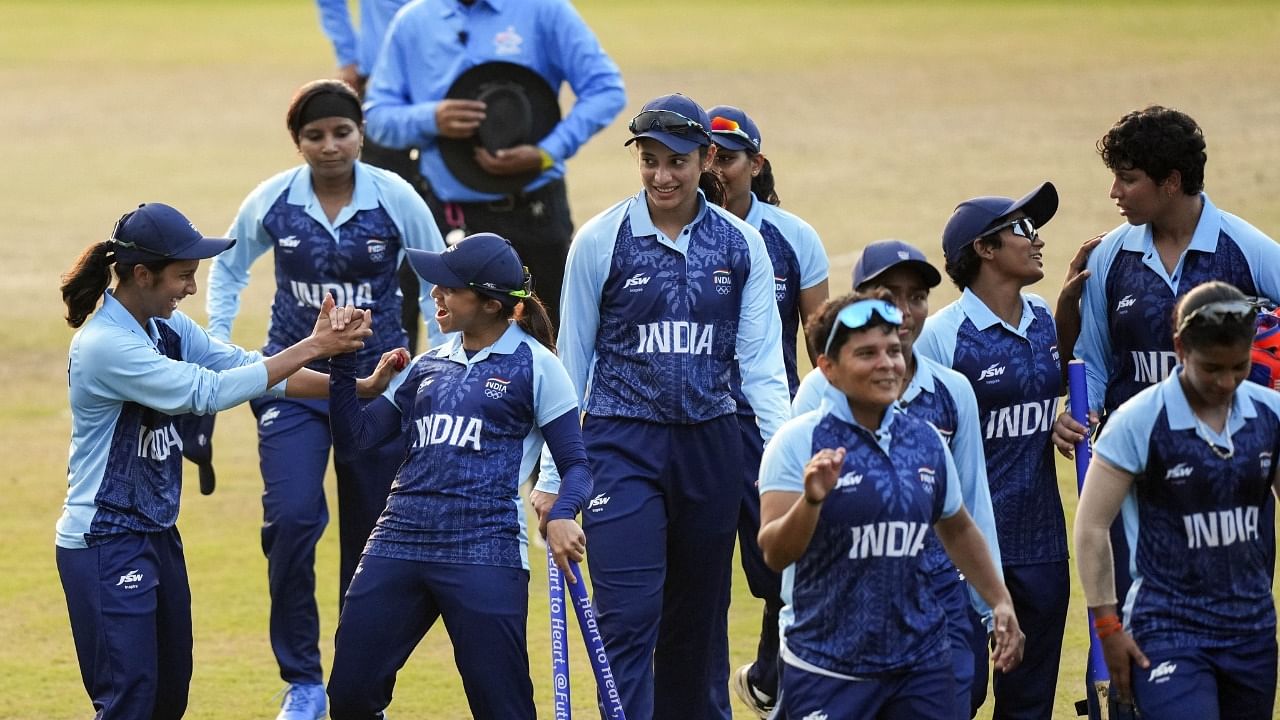
The Indian women’s cricket team struck gold in their Asian Games debut recently.
Credit: PTI Photo
There’s a story going around of a cricket fan who bought a ticket for the World Cup without realising that the date for the India vs Pakistan match coincided with his own wedding date. So he put out a notice on WhatsApp that if anyone was free, and wished to go in his place: it’s at Shri Swaminarayan temple in Baroda on October 14, and the bride’s name, Chandralekha.
In cricket-crazy India, preferring an exchange of hi-fives at a stadium, over an exchange of vows at a temple, isn’t surprising.
But would a girl give up her groom rather than give up her precious seat for an Indo-Pak clash? Probably even faster than a guy — going by the sheer gender-equal fervour cricket evokes in India today!
Ladies lead
Men’s cricket bigots, who think guys lead in all things cricket, will be disconcerted to know that the very first World Cup Cricket was played not by men, but by ladies in 1973. Men’s cricket of this popular format followed only two years later. And there’s more.
Quiz aficionados delight in answering these questions: who’s the very first cricketer to score 200 in ODIs? No not Sachin — it was an Aussie lady Belinda Clark at the 1997 World Cup. Who’s the youngest Indian to score a century on debut? No not 18-year-old Prithvi Shaw but Mithali Raj. She was just 16.
Shubman Gill wowed the world this year with his ODI double-century record at 23. But the youngest to hit a double (232) in ODI is again a girl: Amelia Kerr, just 17.
Sexist — not sexy
Sexism in cricket goes back centuries — and it took a determined set of women to storm this male bastion in 1745, and record the first-ever women’s cricket match with “11 maids of Bramley and 11 maids of Hambledon, all in white”.
Their long frilly gowns hampered running, not to mention modest inner slips that restricted taking a diving catch at the slips.
As for cricket terminology, Third Man, Night Watchman, and of course Batsman, assumed it would forever be a gentleman’s game.
Oh yes, there was also bowling a maiden over, which became the most over-used cricketing pun ever to describe any player landing a bride.
A sideshow?
For years, women’s cricket had just a sideshow status in India. Diana Edulji had to break gender stereotyping as well as four front teeth, on her path to Captain; yet while touring England, was refused entry into the snooty Lord’s Pavilion in 1986. Leading to her famous quip: “MCC (Marylebone Cricket Club) should change its name to MCP” (Male Chauvinist Pigs)! Skipper Harmanpreet Kaur once hit such a huge six; her bat was sent for a lab test, while Harmanpreet herself underwent a dope test: how could a mere 19-year-old girl hit like a Dhoni?
In 1874, the first testicular guard for men was invented. But helmets became mandatory only in 1978. Leading us to this surmise: it took more than a hundred years to realise that for men, brains are important too.
(He Said/She Said is a monthly column on gender issues — funny side up. Reach the author at indubee8@yahoo.co.in)